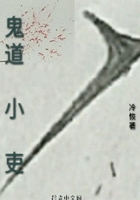We have already inquired into the nature of the head, and the various modifications in its structure, which are met with in all mammals, from man downwards.
Let us now proceed to examine the rest of the bony skeleton.
Our earlier lessons have shown us that the most important part of that skeleton is the vertebral column. It is the possession, or otherwise, of this backbone, with the rest of the internal framework, which constitutes the first great line of separation into vertebrates and invertebrates.
Taking again the human skeleton as our starting-point, we find that the vertebral or spinal column is made up of thirty-three separate bones or vertebras. There are seven vertebrae to form the neck; twelve to form the back; five to form the loins; five to form the sacrum, and four at the lower extremity. That is to say, the number of bones was originally thirty-three. The five vertebrae of the sacrum are separate bones only in the child. They are united into one solid bone in adult age. In the same way the four lowermost vertebrae, although separate bones in the child, become welded into one in the adult.
Each vertebra consists of a thick solid part, which is called the body, and of processes or projections, which serve to bind the whole chain of bones together. The body and these processes enclose between them a hollow ring. When thevertebrae are in position the body of one rests on the body of that below it, the rings are all one above the other so as to form a continuous canal, and the processes too are all in line. The ends of the middle or spinous processes can be felt down the back.
In man, and in all mammals, the "body" of each vertebra is flat, and covered with a thick pad of cartilage.
Let us now look at the vertebrae of the neck-cervical vertebrae, they are sometimes called. There are seven of them. We cannot pass them by without a glance at the two topmost of these bones.
The first is the Atlas vertebra, so called because it holds or supports the head, as the fabled Atlas of old was said to support the world. The smooth condyles at the base of the skull rock upon corresponding hollows on the upper side of this bone. The nodding of the head is accomplished in this way by a hinge joint.
But we must examine this Atlas vertebra further, and then we shall find that it differs from all the rest, in having no body. In place of the body there is a hollow ring, andinto this ring fits an upright peg or projection from the second vertebra, which is called the Axis vertebra.
The turning of the head from side to side is brought about by the Atlas bone turning round on this peg, as on a pivot, and carrying the head round with it.
It is a remarkable fact that in all mammals the number of the neck vertebrae is seven. The giraffe, with its long craning neck, has seven vertebrae; elephant, with its very short neck, has seven; and the whale, whose head seems to be joined directly to the body, without anyneck at all, has also seven, although they are not much thicker than a wafer.
Seeing that in the giraffe there are so few joints for such an enormous length of neck,it is easy to understand why the movements of its head, so far from being graceful, are positively awkward and ungainly. But how admirably the creature is fitted by this very neck for its habits and life. It browses upon the tender young twigs andleaves of the trees, just as other animals do upon the grass at their feet.
The elephant, too, seeks the same food, but we have only to compare the small head of the giraffe with the ponderous head of the elephant, to see why he was not also provided with a long neck for the purpose of reaching it. He tears off what he wants with his long trunk and conveys it to his mouth, while the giraffe simply nibbles it where it grows upon the tree.
The pig and the mole have short thick necks. The one roots in the ground with its snout; the other actually burrows in the earth. A long neck would be out of place in either animal.
The vertebrae of the back, or Dorsal vertebrae, as they are also called, are those that bear the ribs. In man and the four-handed animals there are twelve of these vertebrae, and consequently twelve pairs of ribs. Most mammals have more than twelve. The lion, for example,has thirteen, the giraffe fourteen, the whale fifteen, and the elephant twenty. The four lowermost bones of the column in man form a sort of rudimentary tail, man being a tail-less animal. In this respect the apes are like him, and they, too, have only four of these vertebrae.
There is, however, considerable divergence here among the various orders of mammals. This tail part of the column contains, in the giraffe, eighteen vertebrae, in the elephant twenty-seven, in the lion twenty-six, and in the long-tailed monkey thirty-one.















